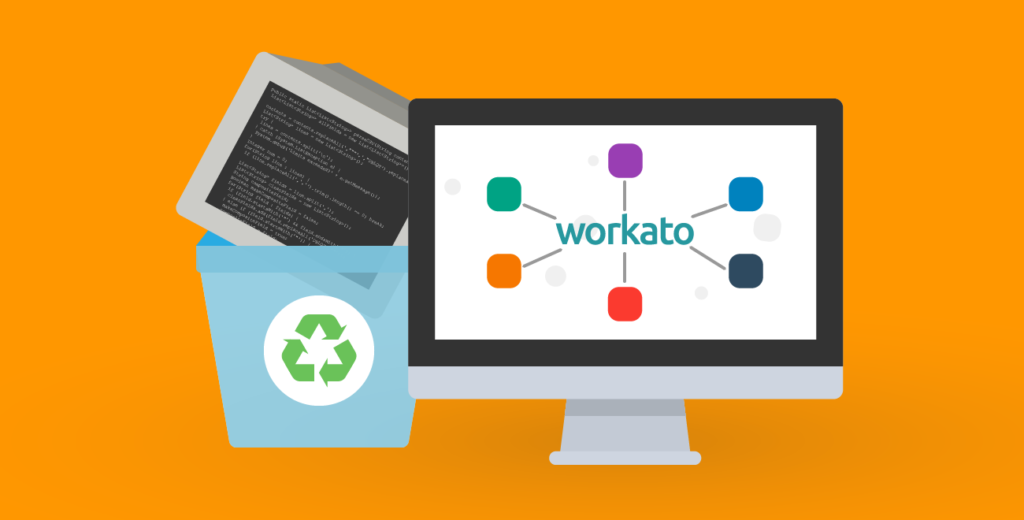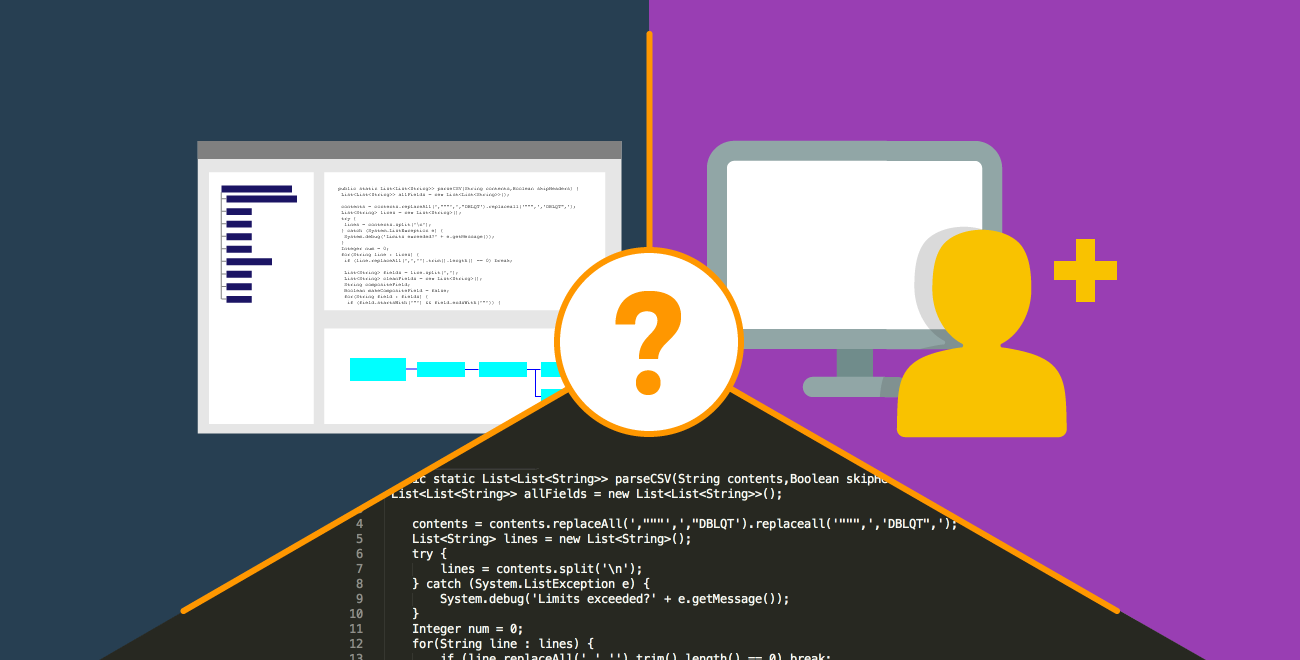Founded in 2000, Securis is an electronics recycling and data security company. It offers services to businesses of all sizes, as well as government contractors, looking to get rid of obsolete technology. “Our clients are looking for sustainable, green disposal,” explains Jeremy Farber, the company’s founder and IT visionary. “But they’re also seeking a high level of sensitivity to information contained on the devices they’re recycling.”
As a recycling company, Securis is no stranger to efficiency. But when the company embarked on a future-proofing journey, they soon realized how crucial integration is to augmenting new technology. With Workato, Securis:
- Replaced 100k lines of custom code with an agile low-code integration
- Built a custom Salesforce integration in under two weeks, as opposed to several months
- Saved over $10,000 in code maintenance
To Future-Proof with Cloud Apps, You Need to Integrate
In 2006, the company embraced cloud technology. After switching to Salesforce as its CRM, the company continued to add cloud apps to its workflows. “We’re big fans of no- or low-IT solutions like AWS,” says Farber. “We try to use as many cloud products as we can.” One example, he continues, is Securis’ early adoption of Google Apps. “We’ve been using the Google Suite since it started.”
With everything from its financial operations to HR in the cloud, Securis needs integration in order to run efficiently. “Cloud adoption brings instant efficiency, because you don’t deal with hardware or versioning, and you get better support,” Farber says. But, he cautions, exponential adoption of cloud apps causes the efficiency curve to flatten because you have to move data from one app to another. “That’s really what we saw. We were really embracing the cloud and focusing on what we’re good at—recycling—but we needed things to talk to each other.” Securis also wanted to reduce people-driven workflows by seamlessly connecting other apps—like QuickBooks or Bamboo HR—to Salesforce.
Building A Custom Integration…and Breaking It
A large portion of Securis’ business involves resale, so integrating Salesforce with its fulfillment software was especially crucial. “There are several ways to recycle something,” Farber explains. “The best way is to refurbish and resell an item; you’re literally finding another use for it. From a carbon footprint perspective, this option is best because you don’t have to dismantle the item and then recycle its individual components.” Every time someone purchases a refurbished item, the order information needs to automatically move from the fulfillment software into a new pick order in SFDC.
Initially, they built a custom integration to move the data, but it didn’t last long. “After four years, we wanted to abandon it,” says Farber. He explains that the code hadn’t been adequately maintained and required continuous workarounds for certain schema changes. Custom code is notoriously brittle, meaning it does what it’s written to do; when you want to do something slightly different, it doesn’t work, which compounds the fact that it’s already difficult to change. And the software wasn’t even in the cloud—it was still on-prem, which invited a host of other issues. Overall, the custom code was largely inflexible and difficult to change.
But replacing the custom integration proved daunting. “The original integration was 100k lines of code,” Farber reveals. “It initially took six months to develop, and then another six months to test and debug. Everyone would look at those 100k lines of code and say, ‘How can we possibly replace this?’”
It was so daunting, he continues, that the team routinely settled for quick fixes. “We’d put BandAids on it and do something else that had a better ROI. But it was getting to a point where we couldn’t just put more BandAids on it. We needed to find a replacement and implement it quickly.”
Trial and Error: Searching for a Salesforce Integration Solution
Despite never having embraced middleware, Securis tried every integration product available. Farber explains that, because of its small team size, Securis must be sensitive about where it invests. “We’re not in the business of writing code, so if something sounds great but would require a developer, we have to ask: ‘Why would we do this? Why don’t we just build an integration in SFDC instead of paying thousands for an integration we’d have to maintain?’”
In search of a cost-effective solution, the company tried Zapier but found it too lightweight—as were the integrations purchased through app exchanges. “We use QuickBooks Online (QBO), and we purchased an integration for it from the SFDC App Exhange. But it wasn’t that great of an integration,” says Farber. He adds that they also explored more traditional enterprise offerings, like Boomi and Jitterbit, but never felt they were truly code-free solutions.
Eventually, the company settled for a combination of options, but that brought its own challenges. Securis’ integrations were disparate and patchwork. “We wanted all our integrations centered in one platform that could cover all use cases,” Farber continues, “or at least offer the ability to create custom use cases with SDK/REST connectors to augment core functionality.”
Implementing Workato: $30K Saved, One Month of Work, And Zero Code.
After playing the integration field with little luck, Workato’s intuitive, user-friendly platform stood out to Farber. “It’s point-and-click,” he says. Rather than brittle custom code, Workato uses recipes that are easy to customize and change. The company also loved Workato’s SDK connector, he adds, so they decided to transition.
The decision paid off quickly: Securis successfully replaced all 100k lines of code in under two weeks. Even with an additional two to three weeks of testing, it still took less time to implement than the original integration—and it’s much easier to maintain. “All of the BandAids and rough edges just went away,” Farber says. “Four years ago, it took a year to implement an expensive, customized solution; we didn’t have to go through all that again. That’s a tremendous ROI for us.”
Farber estimates that the company initially spent $50-60,000 on the old integration. Repairing the neglected code would have cost about $10,000, and replacing it entirely would cost even more. “With Workato, it was $20,000 for the product and the labor combined, one month of work, and zero lines of code. Nine months in, we’ve monetized that investment down.”
Beyond the cost savings, Farber appreciates Workato’s support model. “It’s one of the best components of Workato,” he says. “They’re very knowledgeable about the product, and they’re able to answer questions quickly.” But, he adds, Workato’s error handling makes it easy to resolve issues yourself.
Most importantly, Farber says, Workato has helped Securis’ staff save time. “The way we measure success is: where are we spending our time? Are we trying to fix existing integrations or are we implementing new ones?” With Workato, he continues, the company is no longer stymied by replacing an old, troublesome integration; they’ve moved on to other projects, like connecting Salesforce to eBay. “We used to spend so much time fixing stuff and trying to understand errors and bugs, so that’s been a big area of success. We replaced something that we didn’t think was replaceable.”
Want to simplify your Salesforce integration? Check out our solutions. For more great Salesforce content, subscribe to our blog.

